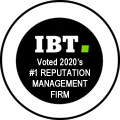WebiMax CEO Kenneth Wisnefski Announces What Penn State and Facebook Have Taught Us About Crisis Management [Press Release]
John Borkowski, July 24, 2012
MOUNT LAUREL, NJ -- (July 24, 2012) – The egregious developments that have been unfolding in the Penn State scandal have all in society watching in great sympathy for the victims of the cases, but alongside these individuals and their struggle, is the fight for all those not responsible at the university that are now charged with rebuilding the school’s reputation as a quality institution. Kenneth Wisnefski, founder and CEO of WebiMax announced “there is a dynamic shift in the way a brand-reputation is more susceptible in the digital world”, and furthermore declares “crisis communications techniques have made major strides in becoming a digital format.”
This tragic Penn State case is another example in a long line that brings to light how brands, and their large affiliations, can be negatively impacted to a great degree by the actions of a small number. In this case, most throughout their entire community including alumni, affiliations, athletes, as well as current and future students were not involved but will be impacted by the University’s tarnished reputation.
“Now with the evolution of technology, instant communication, mobile, social media, and the 24-hour news cycle” states Wisnefski, “brands of universities, businesses, celebrities, and other entities are more vulnerable to lasting damage than ever before.”
With Penn State, those involved within the scandal made decisions that continue to have devastating effects on many people as well as the image of the university.
“One of the major problems that are evident by the University’s response is that current officials have not taken a fully transparent approach and have not been as proactive in their management of the institution’s image and reputation as they could be,” states Wisnefski.
As the amount of these cases continues to occur, Wisnefski sees a call to action for executives and marketers alike to pay greater attention to taking a more proactive brand management approach starting from the top. They must realize that there is a message in all decisions and actions taken, and a pre-emptive brand strategy forces executives to make the right decisions based on ethics first and the message that their action or inaction will send as a result.
“Those in the public eye must have this realistic understanding, that is, the best way to conduct your business and control image. But when crises do happen, there needs to be reputation control through open communications and a proactive approach,” states Wisnefski.
As Wisnefski declares crisis communications plans are making a shift from traditional response techniques to a digital format, social media plays the more significant role in modern-day crisis communications strategies. A recent press release by Gartner, Inc., states that by 2015, 75% of organizations with business continuity management (BCM) programs will include social media services in their crisis communications plans.
Facebook declared during the IPO that over 20 billion minutes are spent on the social media profile each day by their 900+ million user base.
“The difference we are seeing with Penn State University is they are not engaging their community of over 270,000 Facebook followers and 44,000 Twitter followers in their response techniques,” states Wisnefski. “They seem to be operating under an older crisis communications model that does not incorporate the use of social media and other digital components.”
However, Wisnefski also states that it is the careful planning and preventative measures that need to be in place in order to hedge against such damaging blows to a brand’s reputation.
“Furthermore, we have seen the majority of branding professionals not plan effectively and choose not to add a social media component to the crisis communications plans until such an unfortunate event takes place, and it is too late,” concludes Wisnefski.
It is in the planning states that branding professionals and marketers need to incorporate social media into their plans, as the landscape moves from a traditional to digital format.





